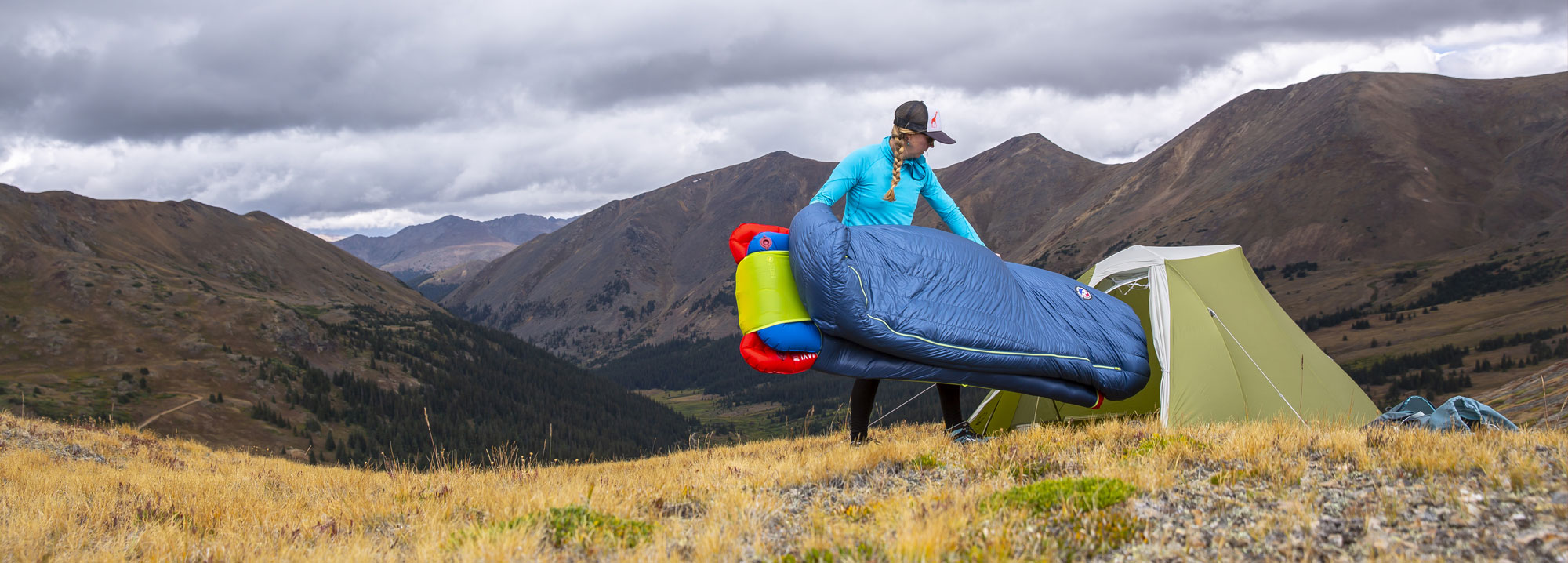Sleeping Bag Size and Shape
May 24, 2022

What Size and Shape Sleeping Bag?
The sleeping bag is a vital piece of kit in any camping set up but choosing one can be difficult. After you've decided on how much you want to spend, how cold you need it to be able to go down to and how much weight you're happy to carry there are still a lot of aspects to consider. Here we have tried to show some of the things you might want to consider in terms of the size and shape of bag that will suit you best.
Sleeping Bag Length - Some manufacturers make the same sleeping bag in various lengths to suit taller people. Short, Regular and Long bags normally refer to 5'6", 6' and 6'6" respectively - but not always - Yeti for example produce a Medium bag for people up to 5'6". Obviously you should buy the bag to suit your height - don't simply go for the largest bag for the extra room as often you are left with dead space, that is air that does not insulate you and keep you warm. Some manufacturers only make bags in one length, or perhaps two (Regular and Long) so you don't always get much choice.
Women's Specific Bags - There are a number of subtle differences between men's and women's sleeping bags down to biological and physiological variations. Most of the major sleeping bag brands produce bags specifically for men and women but some still just produce a unisex bag. Women's specific bags are generally made shorter than men's bags and are a slightly different shape to more closely match a women's shape. Some Women's specific bags have more down in critical areas such as the feet, which have been proven to be particularly susceptible to cold for a woman. Biologically speaking, women tend to sleep colder than men so often there is more down in a bag to make up the difference for the temperature rating.
Sleeping Bag Girth - Most manufacturers quote the internal girth around the widest part of the bag - at the shoulders, this can give you an idea of how much space you will have or how restricted you might feel in a particular bag. In order to decide about girth you can measure the same dimension on your previous sleeping bag and compare it to the quoted figures. Again, as with most outdoor gear there have been developments within this area and a number of brands produce expansion baffles which are zipped onto your bag to provide extra space, both Mountain Equipment and Western Mountaineering produce these. There are also innovative examples such as the Big Agnes Torchlight UL Sleeping Bags which come with expandable panels down the sides for a more customizable fit.
Rectangular versus Mummy shapes - Most sleeping bags you will see on our website are Mummy shaped, this is because a close fitting bag will be warmer for a given weight because there is less volume of air to move around carrying heat away with it, and a close fitting bag weighs less than other shapes because there is no waste of material.
Some people feel too restricted by a mummy bag and would rather carry a bit more weight and have a sleeping bag with lots of room in it. Rectangular or Tapered bags offer the user more room to move around and often the bag completely unzips around the feet so that it can be used as a quilt rather than a sleeping bag. Often tapered bags don't have a hood - as the focus is less on maximum heat for minimum weight, and more on comfort and freedom to move around.
The traditional sleeping bags shapes have also seen changes in recent years with companies like Nemo using a 'spoon' shape to bridge the gap between rectangular and mummy. Admittedly, the high performance/low weight bags are still mummy shaped as the more relaxed the shape becomes the more weight is added.
Quilts - This refers to a flat quilted cover that offers complete freedom of movement when sleeping. The danger here is from draughts, and you need a warm sleeping mat to insulate you from the ground. Quilts have become a popular option for lightweight backpacking recently and there have been numerous advancements in this area. The popularity of the quilt has increased in the search for weight cutting as they weigh less needing to use less material and foregoing design features like zips and draw cords.
Many sleeping bags place little down (and in some cases none) in the back of a sleeping bag as the down is compressed and inefficient as an insulator so the quilt works just as well in these simple terms. Some quilts come with straps so you can attach it to your sleeping mat and reduce the risk of draughts, others have a greater width so you can tuck it under you and many quilts come with a full footbox too. The features and similarities to lightweight bags have driven the popularity in quilts, especially for summer to three season use.
